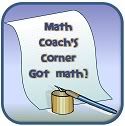This article explains the "stuck" problem in problem solving!
GETTING STUCK, GETTING UNSTUCK—COACHING AND QUESTIONING
Problem-solving involves being "stuck." If a task does not puzzle us at all, then it is not a problem; it is an exercise. Sometimes it is appropriate to congratulate a student for being stuck—it means the student has tackled a worthwhile challenge and gotten to a meaningful point.
One way to get stuck is to ask questions that are beyond our background to solve or are not entirely clear. Progress can also halt when we are unable to determine what knowledge would be useful to apply at a particular point. The most common form of "stuck-ness" faced by students stems from their failure to identify the obstacle to their progress. They are stuck because they believe that being stuck is an amorphous and hopeless situation. Teachers and mentors need to help students understand that there are many specific ways to be stuck, and that, for each barrier, there are associated methods for becoming unstuck. The challenge, when stuck, is determining why one is stuck.
Read the whole article: http://www2.edc.org/makingmath/handbook/teacher/StuckAndUnstuck/StuckAndUnstuck.asp



















0 comments:
Post a Comment